Congratulations, you’ve just graduated with your Bachelor’s or Master’s Degree in Elementary Education! Or maybe you have completed an alternative program and now are ready to teach.
You’ve interviewed, gotten a job teaching a grade between Kindergarten and Fifth grade. You have the keys to your classroom and you know who your students are (maybe).
Now what?
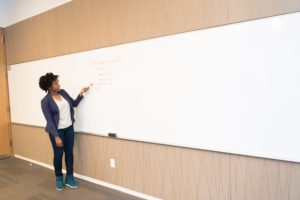
Now it’s time to begin your journey.
A journey to becoming a great teacher.
This post is specifically about becoming a great math teacher in elementary school.
Can it be done? How long does it take? How will you know when you’re a great math teacher?
Today I want to share 5 steps on becoming a great math teacher and what you can do once you are one.
- Learn More About Elementary Math
- Get Organized
- Get Creative and Stay Creative
- Become Flexible
- Talk and Collaborate with Others
Learn More About Elementary Math
State Standards
After settling into your classroom and getting a little more comfortable, take some time out and begin to get to know more about the math standards you will be teaching in your grade level.
Your school might provide a book or document that gives an overview of the standards you will be teaching. If not, you can always look online. Most of the states in the U.S. are using the Common Core State Standards. If your state is using their own standards, look at your state education website for more information. This is especially important if your state gives an end of the year assessment to all of the students in that state.
Knowing the expectations for the students in your state is very important.
The standards tell you what you will need to teach your students over the course of the school year. The standards do not tell you how to teach each skill or when and how long to teach each skill.
There are many supplemental resources and documents available that provide these details and suggestions for school districts who need assistance with making those important decisions. You can find these online, in the curriculum provided at your school, or even by asking other teachers in your school if you are not sure.
For those who teach The Common Core State Standards, there is a great text that helps teachers break down what learning expectations there are for both the teacher and the students for each grade level. The title is The Common Core Mathematics Companion: The Standards Decoded (Gojack, Miles). There are versions for Grades K-2, and Grades 3 – 5. There are also versions for middle school and high school teachers, however, my experience has only been with the elementary grades.
MTPs
With the standards, there are also best teaching practices for Mathematics Teachers. After much research, the National Council for Teachers of Mathematics (NCTM) has developed a list of practices that best enhance learning with students in the Elementary School. They are called Mathematics Teacher Practices or MTPs. These include the following:
- Establish mathematics goals to focus learning
- Implement tasks that promote reasoning and problem solving
- Use and connect mathematical representations
- Facilitate meaningful mathematical discourse
- Pose purposeful questions
- Build procedural fluency from conceptual understanding
- Support productive struggle in learning mathematics
- Elicit and use evidence of student thinking
Effective Mathematics Teaching PracticesEffective Mathematics Teaching Practices
SMP’s
In addition to content standards that need to be taught, there are action standards that should also be taught. These are eight ways that students who are good at mathematics show their learning. They are called the Standards for Mathematical Practice, or SMPs.
- Make sense of problems and persevere in solving them.
- Reason abstractly and quantitatively.
- Construct viable arguments and critique the reasoning of others.
- Model with mathematics
- Use appropriate tools strategically
- Attend to precision
- Look for and make use of structure
- Look for and express regularity in repeated reasoning
Standards for Mathematical Practice – Common Core State Standards Math
The expectation is not for you to learn and memorize all of your grade level standards, the MTPs, and the SMPs all in your first year. Probably not in your second or third year either.
The idea is that you are aware that they are there and are consciously choosing to include them in your math instruction. You will have control and autonomy in how math is taught in your classroom but you should know what research shows and the best practices are for what you are teaching.
Get Organized
Organization is very important to becoming successful as a teacher and remaining successful. Can your students still learn if you’re a little messy? Of course. You make your life and communication with others easier, however, the more organized your are.
There are three areas where you should focus on being organized each year as a math teacher:
- Teacher Organization
- Student Organization
- Classroom Organization
Teacher Organization

As a teacher, you want to keep your records neat and organized so that you are able to access them at any time. Many times during meetings with administration or in plcs with other teachers, you will need records of your students’ data and grades to discuss how they are performing. This can be done digitally or physically.
Having a binder with all of your students’ information or file folders can come in handy as well. Or you can walk around with your laptop and look at their digital files and spreadsheets whenever its necessary.
However, even when you go digital, you want to still have some copies of student work with you so that you are able to see their thinking in how they solved each problem. I have seen one teacher in the past take pictures or scan the student work so that she did not have to keep the physical copies herself.
Student Organization

Another important area to keep organized are your students. Your students will absolutely need help with this. Some times as teachers we think that our students come in already knowing how to be neat and organized. They don’t! Even if the teacher the year before taught them how to be organized, you still need to show your students how you would like them to be organized while in your classroom.
This includes how they should keep their desks organized and what notebook or folder goes where, etc. If you teach multiple classes where students share desks, a procedure should be in place for how each student respects the belongings of others who use their same desk.
Also, teach them how to keep their own folders, binders, and notebooks organized. Take the time in the beginning of the year so that you aren’t frustrated as the year goes on with them misplacing assignments or having a notebook out of order. Trust me you will thank me later 😉
If you are having your students keep track of their data, show them how they should graph it in their data binder or notebook as well as where to place their graded assignments.
Don’t assume they know how to do much when it comes to organization. You will probably even show them how to take out and put away their supplies each day.
Kids can be messy!
Classroom Organization
The last area of organization includes your environment. The flow of your classroom environment is very important.
How will your student desks or tables be set up? Where will their books and math manipulatives go? On a shelf on the side of the room or at each group table? What about paper copies of assignments? These can pile up quickly!
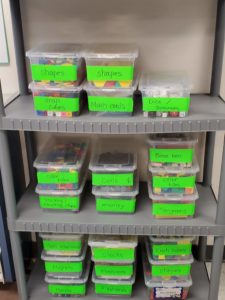
Have a bin or area in the room for students to turn in their assignments and/or homework. Have a separate place for them to turn in important documents such as signed report cards, notes from home, field trip forms, etc. This is all important to the flow of your class and it can sometimes affect how effective your math instruction is.
If you have to stop your instruction to look for copies to an assignment you want to hand out, or manipulatives you want to use during your lesson, you can lose valuable learning time for your students.
Good organization, planning, and preparation all go hand and hand. If you want to be most successful each day with math, you have to have a system of organization that works best for you and your students.
Get Creative and Stay Creative
Math can be a very fun and exciting subject to teach if you can think and be creative. This does not have to be some characteristic that you are born with but something that you put your time and effort in to.
There are so many books, curriculum guides, lessons online, online math programs, and math games for you to choose from to use with your students. Don’t be limited to what is sitting in your classroom when you arrive. After you’ve learned more about what you will be teaching, explore the variety of ways that each skill can be introduced, taught, and practiced.

When finding a lesson already created by someone else – use it! Or don’t use it. Maybe you can add in some ideas that work for you and your students and make the lesson relevant for your class.
Creativity doesn’t only come in what you create, but it can also be present in how you do something with the materials and ideas that you have been given.
Some great ways to keep the creativity going in your math class include allowing time for math games, projects, discussions, differentiation, personalization, and collaboration. Connect what you’re doing in math with other subjects such as reading, writing, science, and social studies.

Rounding and estimation are two examples of math skills that can become more relevant when discussing populations in cities and countries around the world.
Include the elective subjects as well. Linear conversions and measurement are great skills to practice with students walking or running around during P.E. or recess. These concepts can also possibly be connected to games in the Olympics as well.
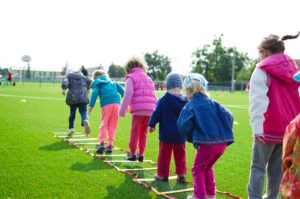
Art and Music can also be integrated with math. Think about designing the layout to a home using area and perimeter measurements.
Connect skip counting to bars in a measure in music or focus on rap lyrics. Many young students understand that there are usually 16 bars in a verse when someone is rapping or singing. Connect that to multiplication and/or division problem.
There are so many ways to get creative with your math instruction. We want our students to have fun while they’re learning, just remember to ensure that the learning is a top priority.
Become Flexible
Without flexibility, frustration is inevitable.
You’ll learn quickly that you have to be flexible in multiple areas when working as an elementary teacher.
There are random fire and weather drills. You may get called over the intercom by the office who needs a student or needs you to answer a question for them over the phone. Late students arriving or students leaving early can cause a small distraction daily. That is just outside of the classroom distractions.
Inside, you might have a sick student or one that is misbehaving. Maybe you forgot to make enough copies of a page you wanted to use during a lesson. Or the most common frustration is usually the technology not working properly right when you want to use it.
All of those things are likely to happen over the course of your first year as a teacher. They may actually happen all in the same day. 🙁
Flexibility is important as a teacher but especially as a math teacher.
If your lesson starts to bomb, you need to learn how to recover and move on so that your students remain engaged. This comes with preparation.

Plan out what you want your students to do. Then plan out what you will do next if they all get it right away. After that, plan out what you will do if none of your students are getting what you are teaching them.
No lesson is perfect and no teacher or student is perfect.
Even when you get into a great routine with your students and have a good flow going each day during math – remain flexible.
New students pop up all of the time and they have no idea of what your procedures or organization systems are in your classroom. They may be behind or ahead of what you are teaching in math based on what school (or other state) that they’ve come from. They have to learn the way you instruct during math, but it is your job to help them learn the math.
Being flexible is a characteristic of a great math teacher because you are always adjusting to what your students’ needs are in order to be most successful.
Sometimes as a brand new teacher, you’ll want to do extra and at times too much. Get to know the laws and teacher rights in your county or district so that you don’t burn yourself out.
There is a balance.
Everyone is not balanced every day, but it can be done more often than not.
While trying to meet the needs of all of your students each and every day, you have to make sure to take care of yourself and your family. Helping your students become successful should always be a top priority but your health and your family should be number one.
Talk and Collaborate with Others
In general, as a brand new teacher, you definitely want to interact with other teachers to bounce ideas back and forth with. Get to know what others are doing in their classrooms with their students and what successes they are having.
PLC’s
You can speak with teachers from your grade level or school during team planning or a Professional Learning Community meeting (PLC).
Usually during a PLC, teachers are discussing different data points to show how students are performing in a specific area.
This is a great time to listen to what is working for others and what steps they will take to improve what is not working.
Share what you’re doing in your classroom, whether good or bad, so that you can get advice from your peers on what to do next.
Professional Development
Another great place to seek out advice from great math teachers is to attend math trainings in your district or county. You will not only gain great tips and ideas from the expert facilitating the training, but you can also hear from the other teachers attending the training.
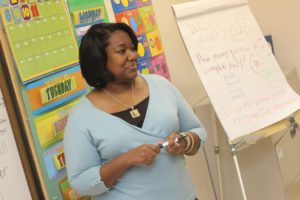
The trainings don’t only need to be specific to math trainings. Any professional development trainings will do. Sometimes at trainings given on reading, science, or even classroom management, I’ve shared and learned from the other teachers sitting at my table when it comes to math.
Sometimes one conversation leads to others that involve some of the major concerns you may have for your students.
Online Communities
One more way to learn more from others is to seek out online communities. This can be a Facebook group or a forum on a specific math topic. Subscribing to newsletters, blogs, or youtube channels of those who share great tips and suggestions online can be helpful too.
I’ve learned so many valuable pieces of information about great math instruction from reading math blogs and watching videos online.
It’s great to see what is similar and different with teachers who are outside of my district, city, and state.
Sometimes I even venture to websites and blogs from other countries depending on the math topic I am researching.
Make it a point not to isolate yourself in these first few years as a math teacher.
Even when you are 10 years into the educational world, continue to learn from others and allow others to learn from you and your experience.
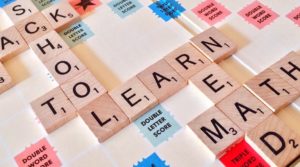
These seem like a lot, again the expectation is not to be a master of math after your first year. You will get better with more experience and remaining open to learning new things each year.
Set small goals from each of the five steps discussed in this blog post. Once you accomplish those, set more to push yourself even farther.
Which of the steps are you excited about starting and which step may have you hesitating a little?
To be notified when I post new articles, videos, math game or activity recommendations, please subscribe to my newsletter.


Great information!! Thank you!
You’re welcome! Thanks for reading. Keep checking back for more 🙂